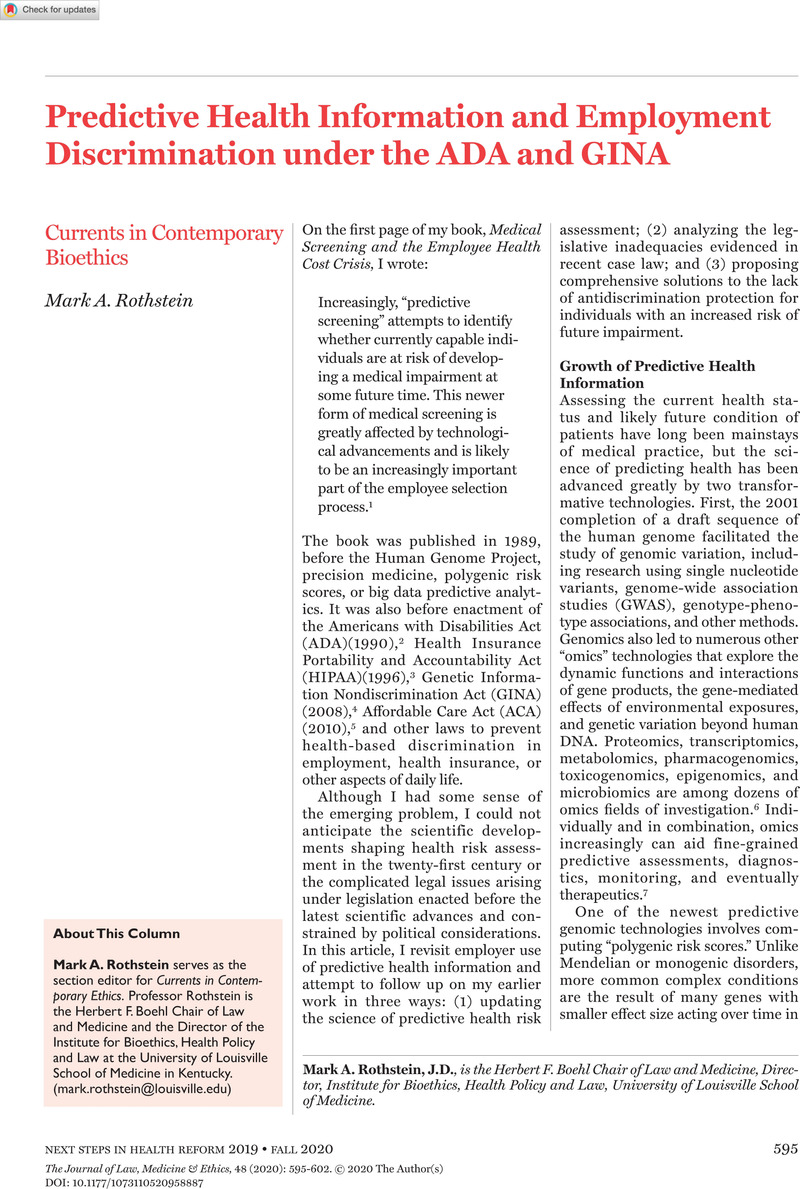Crossref Citations
This article has been cited by the following publications. This list is generated based on data provided by Crossref.
Rothstein, Mark A.
2021.
Big Data, Surveillance Capitalism, and Precision Medicine: Challenges for Privacy.
Journal of Law, Medicine & Ethics,
Vol. 49,
Issue. 4,
p.
666.
Brown, Emily E.
2021.
The genetic counselor's role in management of patients with dyslipidemia.
Current Opinion in Lipidology,
Vol. 32,
Issue. 2,
p.
83.
Inglese, Silvia
Lavazza, Andrea
and
Abbate, Carlo
2022.
Crystal Ball Health Policies: A Case Against Preventive Testing For Alzheimer’s Disease.
Frontiers in Aging Neuroscience,
Vol. 14,
Issue. ,
Tilmes, Nicholas
2022.
Disability, fairness, and algorithmic bias in AI recruitment.
Ethics and Information Technology,
Vol. 24,
Issue. 2,
Tabaghdehi, S. Asieh H.
2024.
Business Strategies and Ethical Challenges in the Digital Ecosystem.
p.
369.



